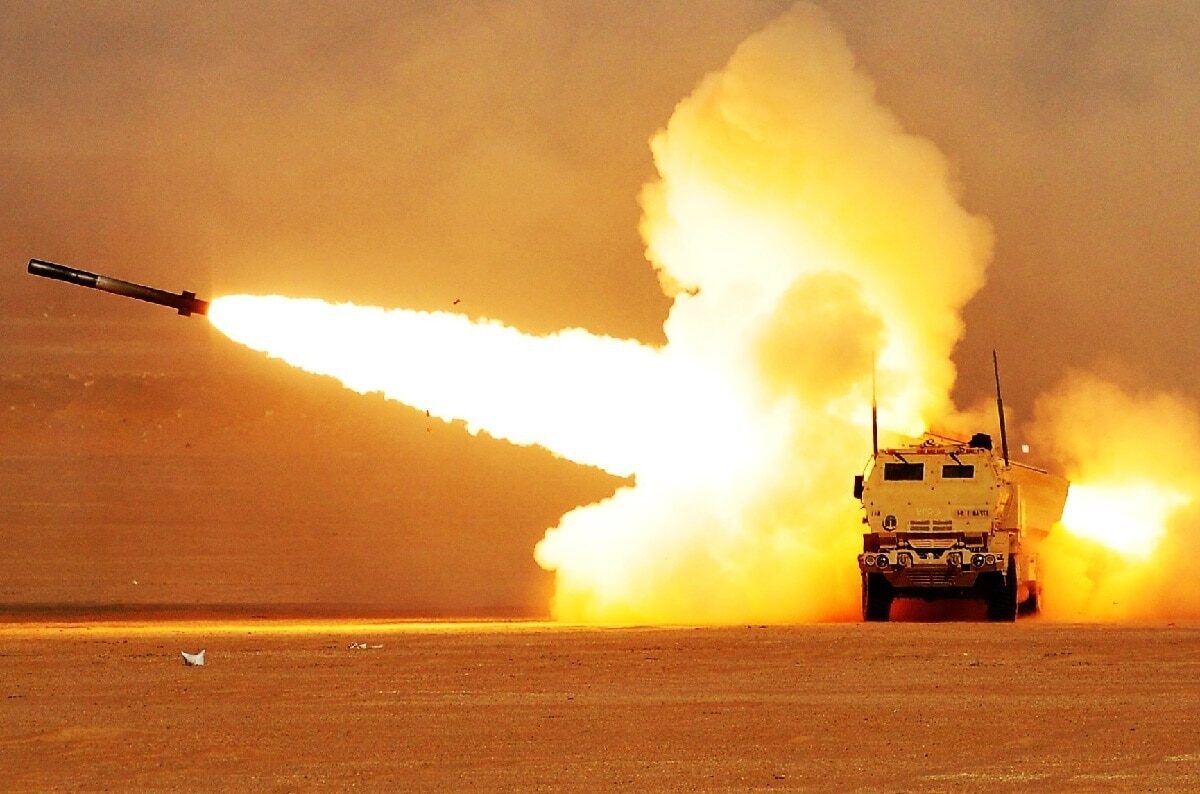You know by now that the war in Ukraine is an artillery duel. Not a day goes by without one side or the other bragging about the destruction that the last artillery bombardment has delivered. The real jewels for Ukraine and Russia are the multiple launch rocket systems that can deliver maximum pain to enemy soldiers and emplacements. The United States has gifted Ukraine the accurate and lethal M142 High Mobility Artillery Rocket Systems (HIMARS) that has proved its worth by destroying numerous Russian targets. But Ukraine is going through HIMARS’ guided rockets at a rapid pace, and it remains to be seen whether the Americans can keep up the supply and even have enough of the munitions for its own military uses.
Would HIMARS Run Out of Rockets in Ukraine?
Each HIMARS launcher costs $7 million and the United States has delivered or promised to send Ukraine 16 of the multiple launch rocket systems. The Ukrainians want even more – their wish list includes 100 HIMARS launchers. This would be 20 percent of the total allotments of HIMARS for the Army and Marine Corps. Even if the Ukrainians keep from 12 to 20 HIMARS in their arsenal, over the long-term they could run out of rockets.
Military Analysts Say Rocket Supplies Can Dwindle
Retired Marine Colonel Mark Cancian is a senior adviser with the Center for Strategic and International Studies. Cancian told the War Zone on July 27, “As long as you only have 12 or 20 HIMARS systems, the [munitions] burn rate is not going to be a near-term problem. When you start getting more than that, and you start looking out three months, four months, I think at the end of four months, you may just run out.”
More Details on HIMARS
The wheeled HIMARS can travel 60 miles per hour on roads. The rockets have a range of up to 53 miles with an M31 200 pound warhead. The projectiles are GPS-guided making it an accurate munition. So far the Ukrainians have used it to mainly target Russian ammunition dumps and other supply facilities. HIMARS has also been used against at least one bridge that was critical for Russian re-supply efforts.
HIMARS is also a potent solution for counter-battery fire. Ukraine even claims that they have killed senior Russian officers in salvoes against military infrastructure. Russia’s higher ranking commanders are spending more time on the forward lines during the battle of Donbas. Ukrainian HIMARS strikes are making Russia pay the price against those senior commanders and the logistics facilities they oversee from nearby command posts.
Are the Supply of Rockets Sustainable?
But will the United States be able to supply enough of the rockets to Ukraine? Retired Army Lieutenant General Mark Hertling, a military analyst for CNN, also believes the burn rate is high. Sixteen launchers with six round pods firing only two missions a day would go through 192 rockets every 24 hours and 5,800 rockets per month, Hertling said on Twitter. These guided rockets also cost $168,000 a piece so the Ukrainians are asking for an expensive launcher with pricey supplies. The U.S. Army purchased 50,000 guided multiple launch rockets in 2021. Giving Ukraine 5,000 per month would deplete its own stock.
It’s not clear how many guided rockets the United States has supplied Ukraine but this back of the envelope arithmetic shows that they will need a significant amount, especially if America sends dozens more launchers that the Ukrainians have asked for.
Russia Could Adjust Tactics
HIMARS may be making a difference now, but that could always change as Russia begins targeting the launchers with its own artillery and aircraft. One salient feature of HIMARS is the speed to which the soldiers can move after firing. Russian counter-battery fires do not often have a chance to hit the HIMARS before it quickly makes its escape to another position.
One thing the Russian military could do is destroy the vehicles that re-supply the rockets. This could endanger HIMARS launchers as they wait for new munitions to be delivered. The United States may have to limit the number of HIMARS donated to Ukraine due to the finite number of guided rockets it can provide. If that is the case, Ukraine may have to get by with only one or two fire missions a day. That may not be enough to turn the tide of this stalemate in Donbas.
Now serving as 1945’s Defense and National Security Editor, Brent M. Eastwood, PhD, is the author of Humans, Machines, and Data: Future Trends in Warfare. He is an Emerging Threats expert and former U.S. Army Infantry officer. You can follow him on Twitter @BMEastwood.

